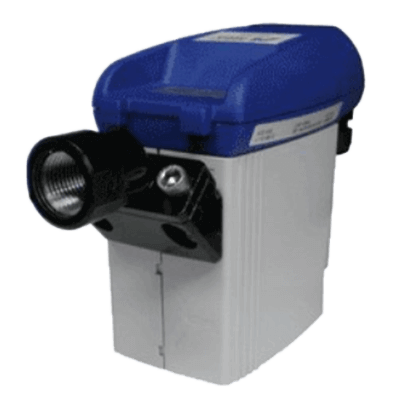What Is an Automatic Drain?

An Automatic Drain is a device that automatically discharges unwanted moisture and other substances that have accumulated in the piping to the outside.
Condensation is moisture mixed in the piping of compressed air or steam. In the case of air, it is generated during compression and heat exchange.
In steam piping, it is generated when the temperature drops during transfer. Moisture in the piping can cause equipment failure or malfunction, so an automatic drain must be connected to the piping.
A device that discharges condensation is called a drain trap, and a device that automatically discharges condensate is called an automatic drain or automatic drain trap.
Uses of Automatic Drain
Automatic Drains are commonly used in compressed air and steam piping. In compressed air piping, they are mainly installed on the secondary side of compressors. Since moisture is generated when air is compressed by a compressor, installing an auto drain in the outlet piping will discharge the moisture.
When used in steam piping, it is installed at a low slope or at the outlet of a heat exchanger. Ideally, only the moisture in steam is discharged and steam should not leak as much as possible. In reality, however, moisture is discharged along with some steam. A drain trap for steam is also called a steam trap.
Depending on the situation, it may be attached to the drain pipe. The purpose is to prevent backflow and odor leakage. Used for drain piping of air conditioners and refrigerators.
Principle of Automatic Drain
The principle of automatic drains differ depending on the type of drain, and the selection must be made according to the piping used for each type.
Typical Automatic Drains are the disc type and the float type.
1. Disc Type Automatic Drain
This type of Automatic Drain discharges condensation by moving the internal disc up and down. It does not require electricity and is characterized by its simple structure. It can discharge even if it contains dust and other impurities, but has the disadvantage of discharging excess steam and compressed air. It is used at piping locations with relatively small capacities.
2. Float Type Automatic Drain
This type of Automatic Drain has a float inside, and the buoyancy of the drain causes the outlet connected to the float to open automatically. Like the disk type, it does not require a power supply and can be easily installed. However, the float type is used to discharge relatively clean condensate.
This is because if the condensate contains dust, it will adhere to the float and surrounding areas, causing malfunction. However, since it can discharge a larger volume of condensate than the disc type, it is used in relatively large capacity discharge points.
Types of Automatic Drains
There are various types of Automatic Drains other than those listed above, and they should be selected according to their characteristics.
Typical types are as follows:
1. Bellows Type Automatic Drain
The bellows type has a bellows-shaped tube inside, and when filled with condensation, the bellows expands and contracts to discharge the condensate.
It is compact and lightweight, but features a relatively large discharge volume. However, when the bellows malfunctions, there is a risk of condensate clogging due to blockage. Also, it is structurally unsuitable for high-pressure piping.
2. Bimetal Type Automatic Drain
This is an Automatic Drain that discharges condensate by expansion of bimetal. Bimetal is a part made of two different metals with different thermal expansion coefficients, and is characterized by its ability to bend with changes in temperature.
The bimetal type Automatic Drain is characterized by extremely low steam loss during drain discharge. It also has the advantage that it does not break down even when frozen and has a wide pressure range that can be used. However, care must be taken because the operating point changes slightly when pressure fluctuations are large.
3. Bucket Type Automatic Drain
This is an Automatic Drain that is released when condensate flows into the internal bucket connected to the outlet. It is characterized by its resistance to internal dust and debris. However, note that some products have restrictions on the direction of installation. In addition, malfunctions that wear out the metal parts that drive the bucket can occur.
4. Solenoid Valve Type Automatic Drain
This is an Automatic Drain that uses a solenoid valve at the drain outlet. It has an extremely high discharge capacity and is used where a large amount of condensate is generated. However, a separate power supply is required for installation. There are two types: a timer type driven by a timer and a type that detects and discharges condensate with a sensor.